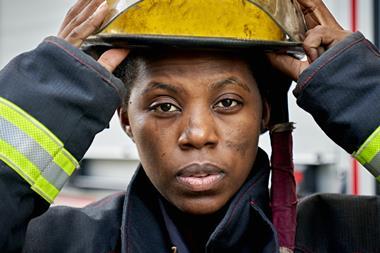The coronavirus outbreak continues to alter the motor insurance market as policyholders’ driving behaviours, car purchase patterns and claims reflect changed road usage. Insurance Times gets the details from Copart UK’s managing director
The changes in policyholders’ driving behaviours and car buying habits as a result of the Covid-19 pandemic could lead to motor insurers needing to offer more short-term and multi car policies, says Jane Pocock, managing director at salvage and online vehicle auction organisation Copart UK.
Pocock notes that demand for used cars during the pandemic has been on the rise, particularly as the manufacture of new cars has slowed or halted due to social distancing. In particular, city dwellers who previously relied solely on public transport are now purchasing used cars to tide them over the peak of the pandemic, especially if they plan to re-locate to more rural areas for six to nine months in order to escape the increased footfall of city life.
Equally, drivers that own a sports car are now looking to buy used cars that can better accommodate their families, either to facilitate a re-location to the countryside or for staycation purposes. Pocock adds that Copart UK has also been promoting motorhomes within its global online auction, to encourage Brits to holiday at home. Those that do wish to travel abroad for their family holiday are still investing in a used car for the short-term, as many do not want to travel in a taxi to the airport and would instead prefer to use their own vehicle.
With these buying trends in mind, Pocock believes that short-term insurance policies and multi car covers will become essential. She says: “There’s definitely been a change in people’s transport requirements – that will impact on flexibility with insurance and just depends on your income, whether or not you can afford to run a second car, or you have to change your car. That flexibility is definitely going to become a future requirement.”
Within the used car market, Pocock adds that more cars with minimal damage, or cars that are a project to repair are being purchased, in the main for new, younger drivers. However, as the pandemic has slowed the pace of many a social calendar, Pocock thinks that individuals are turning their hands to their own repair work.
She says: “We’re giving people guidance on how to repair vehicles as well because vehicles are more complicated in one way because of the technology, but with the right know-how, they can be easily repaired and with introductions to bodyshops and parts manufacturers, then it is possible that you could coordinate a repair of a car yourself, if we point you in the right direction.
“People do have more confidence now, now that they’ve got a bit of time on their hands to actually manage a repair. We’re seeing lots of people coming to us looking for cars for their 17, 18-year-olds to learn to drive in and a couple of dents in the door is neither here nor there because they’re probably going to add a few more!”
Although the reduced supply and high demand model that has been prevalent within the motor market during the pandemic has been “great for [Copart’s] sale returns” as well as the rebates it can offer insurers, Pocock adds that the uptick in used car sales could, however, detrimentally impact insurers’ profitability.
“The impact with insurers is it will attract a lower premium because they are lower value cars. And this is the concern when you enter into a recession. So, not necessarily more risk, just lower premiums and therefore that’s got a knock-on impact on profitability for insurers,” she explained.
Claim frequency and severity
It’s not just car buying habits that have changed as a result of Covid-19, Pocock says, but driving behaviours have also altered. Primarily, this is seen by the fact that there are no peak traffic times as schools are still not fully operational and many employees remain working from home, meaning the typical ‘rush hour’ has yet to return.
This, in turn, affects claim frequency.
Pocock says: “We’re seeing that the claims rate is probably back at roughly 65% to 70% of where it was before the pandemic. And that’s because people’s behaviours are still challenging things around road usage; children aren’t back at school yet, people are still working from home. So, behaviours are still out of kilter from before the pandemic and while road usage is up considerably, it’s phased throughout the day. We’re not seeing the peaks of rush hour in the same way we saw it before. We’re not seeing the uptick in claims.”
Despite the dip in claims frequency, claims severity is still an issue. For example, where the roads have been quieter as a result of the national lockdown, drivers have been travelling more often in high performance cars. “We’ve seen a lot more people going out in high performance cars and running round, and we’ve seen some catastrophic damage to some quite nice, high-end cars, performance cars. We’ve definitely collected more performance cars,” Pocock adds.
Furthermore, flash flooding – such as in Kirkcaldy, Scotland – has also driven claims severity as “that automatically puts cars into category B”. The recent heatwave has had an impact too in terms of causing fires – this could then affect cars that are stored in private barns or manufacturers’ showrooms, as well as farm machinery vehicles.
Pocock thinks these weather-related claims will only escalate. She continues: “What has become apparent to me is how we’re seeing that global warming impact because these flash floods, extreme heat – what we’ve been seeing the past couple of years and I can’t see it getting any better from that perspective.”
UK staycations may also impact on claims severity, with more people driving motorhomes or larger vehicles on a British holiday rather than jet setting to foreign soil. Pocock notes that the salvage sector won’t see the full breadth of this potential trend until after the summer period.
Total loss increase
Another domino from the Covid-19 pandemic is the increase in vehicles identified as a total loss compared to those that are sent for repair.
“We have seen more and more cars come for salvage. We’re actually running at about 80% of normal,” Pocock says. She cites the reasons for this as being “the complexity of repair and trying to get parts during Covid, and with trying to import parts from Europe and there’s been factory shutdowns in Europe - that’s often exacerbated in summer as well with normal factory shutdowns. So, that’s been compounded. Another situation is as the cars get older and people start changing them, favouring electric cars and other things, it tends to push more cars into the total loss arena”.
Pocock adds that “the thresholds for write offs is reducing” too. She continued: “We’re understanding that the optimum position for a total loss is about 65% of [pre-accident value (PAV)].
“If repairs are literally going to be 35% or more, then the car should most definitely be in the total loss arena. Because of the salvage returns we are providing, it makes absolutely no sense to repair the cars. There’s definitely be a shift in that repair matrix.”
No comparison
For Pocock, the coronavirus crisis has just been the next challenging bump in the road for the motor insurance sector, which she believes has had a very difficult year so far.
She explains: “The insurance world, it’s interesting times because they’re now having to recalibrate from an underwriting perspective what they think claims ratios are like for the future and they’re having to look at premiums and risk ratings going forward.
“It’s the most unusual time because most people compare and contrast to last year’s results and it has been incredibly challenging because if you think about it, we had a huge amount of flooding just before the pandemic. We had Brexit to deal with and challenges around the impact on the car market, importing and repairs. And then the pandemic hit us hard with complete lockdown. In the motor claims world, it’s been a seriously rough year.
“Furloughing put a lot of people out of action and then there’s a lot of people out there uncertain about whether they’ll be needed when furlough comes to an end. And then there’s talk of people not going back into the workplace until maybe next year. It’s just been a completely bizarre year for everybody and that’s going to mess up comparable statistics from the previous year.
“Underwriting and risk management is going to be a hell of a challenge - it has been a challenge for every single part of the motor supply chain.”

Hosted by comedian and actor Tom Allen, 34 Gold, 23 Silver and 22 Bronze awards were handed out across an amazing 34 categories recognising brilliance and innovation right across the breadth of UK general insurance.





















































No comments yet